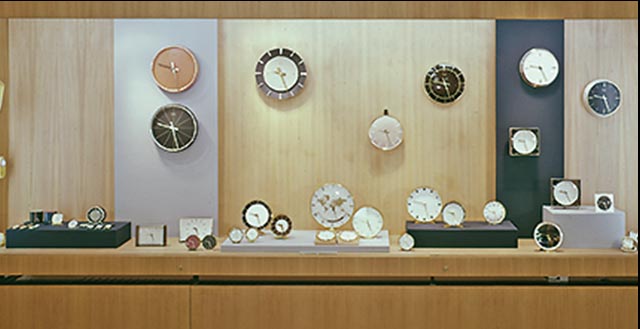
Kienzle and Heinrich Möller – “Stars Fallen from Heaven”
Sales of traditional clocks were stagnating in 1930. Newly styled clocks led the way out of the crisis. They were no longer articles of furniture. Through the use of glass and metal, they became decorative items, to be used in a wide variety of settings.
The Kienzle Clock Factories in Schwenningen pioneered this trend. A 26-year-old named Heinrich Möller became the head of their design department in 1931. He was to impart his defining hallmark on 20th century clock design.
In the mid-1930s, Möller revolutionized the appearance of clocks. His high-quality craftsmanshipped table clocks are defined by smooth shapes and ease of readability. In 1936, Rudolf Bistrick referred to Möller’s clocks as “stars fallen from heaven”.
The “Zeitgeist” unrelentingly demanded concessions from Heinrich Möller. Many of his clocks around 1940 imitated the tendencies of the era’s monumental architecture. The playful shapes of the 1950s were not in keeping with his preference for smooth lines. However, with the resurgence of unadorned modernism in the 1960’s, Möller found himself immersed in his element once again.